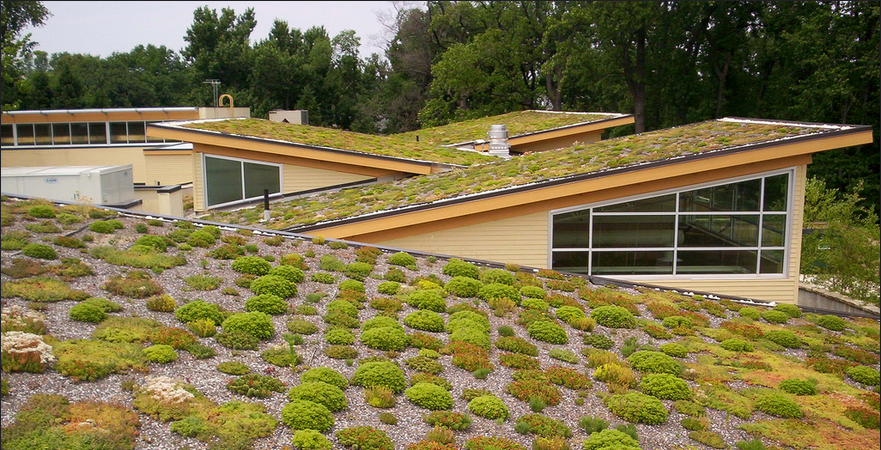Check out below to find the benefits to building and the types of green roofs there are out there for you to consider. It’s an interesting and practical way to make a garden.
Why They Are Beneficial
Green roofs offer so many benefits that it’s a bit surprising they aren’t more popular in the United States. Here are some of the main reasons why a living roof is a great idea, aside from having more gardening space:
1.Increases the longevity of a roof by two to three times.
2.Provides excellent insulation, so you will save money on air conditioning in the summer and heating in the winter.
3.Helps control flooding and water damage during heavy rains.
4.Offers wildlife more habitat and natural food sources.
5.Attracts and helps support beneficial insects like bees.
6.Reduces the carbon footprint of homes.
7.Decreases noise in communities.
8.Improves overall air quality.Types of Green Roofs
There are three classifications that you’ll commonly hear when reading about green roofs:
•Extensive: These roofs are very low maintenance and often used for aesthetics and to conserve energy in the home. Extensive roofs don’t use any special irrigation and aren’t very deep in terms of soil build-up. These roofs are the most expensive to set up, ideal for a wide range of pre-built homes, but aren’t suitable for food production. Generally, you will use different mosses, grasses and herbs.
•Semi-Intensive: These roofs require moderate maintenance and possibly some type of irrigation during the hot and/or dry seasons. Semi-intensive are ideal for someone interested in growing some types of food but are especially ideal for energy conservation and providing wildlife/insect habitat. Typically, this roof will be mostly grasses, herbs and mosses like extensive roofs but can also handle certain shrubs (think small berry bushes) and vegetables as the soil build-up is deeper.
•Intensive: Intensive green roofs are pretty much strictly for commercial use. They require constant irrigation and maintenance. Intensive roofs vary in use but are almost always built as an above-ground park. Some of these roofs are huge and strong enough to even have small ponds built into them. Naturally, this type is not suitable for homeowners.
Be certain to research your potential green roof. For some this is a great solution for those with little room to grow palatable plants and in the backyard.
Go to Off the Grid News where you can see some further information and a terrific video of a building which is undergoing a massive “green roof” make-over.

@[17815053:2048:Etsy Hawkins]